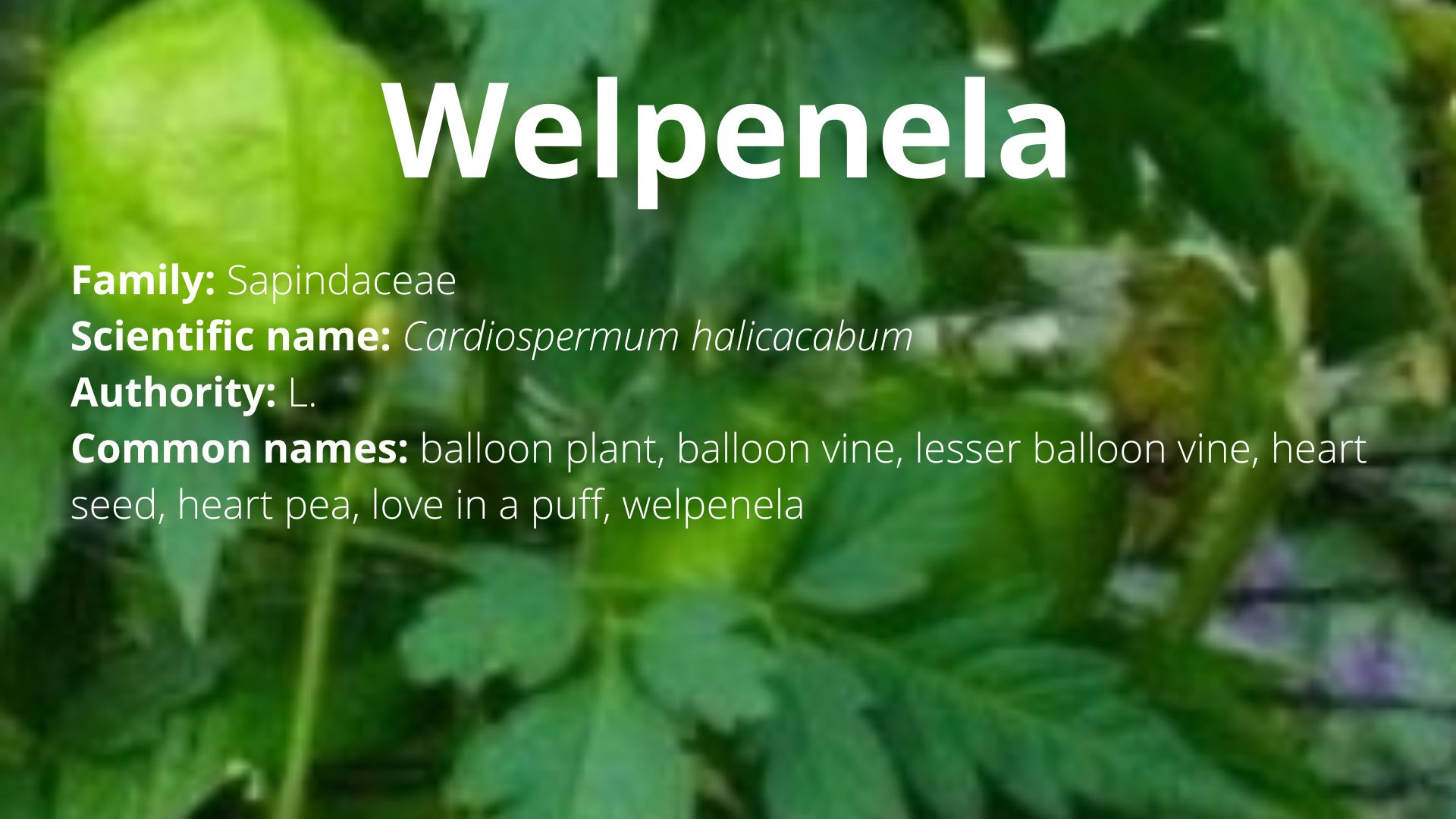Family: Sapindaceae
Scientific name: Cardiospermum halicacabum
Authority: L.
Synonym: Corindum halicacabum (L.) Medik.
Zulu names: ikhambi leziduli, uzipho,
Common names: balloon plant, balloon vine, lesser balloon vine, heart seed, heart pea, love in a puff, welpenela, winter cherry, (English) blaasklimop, (Afrikaans)
Description: C. halicacabum is a woody climbing vine that is distributed in tropical and subtropical Africa and Asia. It has compound leaves with lance-shaped leaflets that have deeply serrated margins, small white to yellowish flowers, and capsules that contain heart shaped seeds.
Uses:
- The plant is used as a diuretic and demulcent.
- The plant is used to treat rheumatism and lumbago. Helps with back and joint pain.
- The plant is used to treat nervous diseases.
- The plant is used as an aphrodisiac. It improves sexual vigour.
- The plant promotes healthier skin.
- The plant treats diarrhoea and improves gut health.
- This plant is used to treat allergies responses, such as hay fever, sneezing, and watery eyes.
Reference and further reading:
- Huang, M.H., Huang, S.S., Wang, B.S., Wu, C.H., Sheu, M.J., Hou, W.C., Lin, S.S. and Huang, G.J., 2011. Antioxidant and anti-inflammatory properties of Cardiospermum halicacabum and its reference compounds ex vivo and in vivo. Journal of ethnopharmacology, 133(2), pp.743-750.
- Raza, S.A., Hussain, S., Riaz, H. and Mahmood, S., 2013. Review of beneficial and remedial aspects of Cardiospermum halicacabum L. African Journal of Pharmacy and Pharmacology, 7(48), pp.3026-3033.
- Viji, M. and Murugesan, S., 2010. Phytochemical analysis and antibacterial activity of medicinal plant Cardiospermum halicacabum Linn. Journal of Phytology, 2(1).
- Vijayakumar, N. and Kumar, K.S., 2021. Cardiospermum halicacabum Linn.-A Review of its Medicinal Effects on Human Healthcare System. Journal of Pharmaceutical Research International, 33(21B), pp.57-63.
